Curriculum
/prod01/channel_2/media/mccms/content-assets/academics/health-sciences-training/physical-therapy-oncologic-residency-mn/WF2734091-0029.jpg)
Trainee experience
The Physical Therapy Oncologic Residency is a full-time, 54-week program. You will complete more than 1,500 hours of clinical practice—including over 150 hours of individual mentored time with board-certified physical therapists and 300 hours of education—across Mayo Clinic's campus in Rochester, Minnesota, coordinated practice settings: hospital-based outpatient (45%), acute care (45%), inpatient rehabilitation (5%), and skilled nursing facility (5%).
In addition, you will gain valuable experience working with oncologic patients across all age groups—pediatric, adult, and geriatric—and with a wide variety of cancer diagnoses.
Didactic and laboratory education is integrated throughout the curriculum and modeled after the oncologic physical therapy description of residency practice in these areas.
Foundational classes
- Clinical reasoning
- Communication and quality service
- Practice management and professionalism
- Evidence based practice and research
- Biopsychosocial and chronic pain management
Topics in cancer rehabilitation
- Cancer biology, pathophysiology, and prevention
- Pharmacology of cancer treatments including chemotherapy, hormonal agents, and immunotherapy
- Radiation physics and toxicity
- Oncologic emergencies and safety considerations
- Patient reported outcomes for cancer-specific symptoms
- Management of fatigue, sarcopenia, and frailty
- Pharmacologic management of cancer-related pain
Cancer-specific management
- Management of late treatment effects in head and neck cancer
- Therapy Interventions for people diagnosed with breast cancer from diagnosis through survivorship
- Effective rehabilitation strategies for individuals affected by specific cancers including lung, gynecologic, and colorectal cancers
- Comprehensive insight into the management of all cancer types listed in the Description of Residency Practice Oncology
- Rehabilitation implications of hematologic cancers including chemotherapy, CAR-T cell therapy, and hematopoietic stem cell transplantation
- Intervention for cancers affecting bone including post-surgical management and bracing
Cancer rehabilitation in acute care, intensive care, and palliative/hospice care
- Rehabilitation management of serious side effects and multisystem involvement of cancer treatment including neutropenic fever, pancytopenia, tumor lysis and paraneoplastic syndromes, as well as cytokine release syndrome
- Therapy management of cancer-related pain and disability from diagnosis through survivorship and palliative care to hospice care
- Management of co-morbidities during cancer treatment
- Therapeutic interventions in neurologic and pediatric cancers
Additional residency experiences and requirements representing the three shields of the Mayo Clinic
Research
- A self-initiated study, designed and implemented by the resident. Examples of appropriate study designs include:
- A retrospective study: Analyze existing clinical data or chart review following guidelines for reporting observational studies (Strengthening the Reporting of Observational Studies in Epidemiology [STROBE]).
- A qualitative study: Collect and analyze qualitative data to better understand a clinical concept or experience.
- A clinimetric study: Examine the clinimetric properties of a clinical measurement procedure used in physical therapy practice.
- A quality improvement project that is proposed, designed, and implemented by the resident to address a department need. The resident must prepare a scholarly product (manuscript or poster) reflecting their contribution to the project.
- Participation in a defined role in ongoing departmental research activities. The resident must prepare a scholarly product (manuscript or poster) reflecting their contribution to the project.
Education
- Attendance at institutional regulatory meetings for clinical and research initiatives
- Teaching therapy staff during education meetings or literature discussion groups
- Present at an interdisciplinary educational meeting
- Instruction to first, second, and third year PT students in the classroom or clinic during student rotations
- Education presented to a community organization or cancer support group
Clinical
- Observation experiences with interdisciplinary collaborators: radiation oncology, maxillofacial and prosthodontics, cardio-oncology, breast and melanoma surgery, plastic surgery, and survivorship clinics
- Exposure to prosthetic and orthotic fitting, cancer education classes, bra and wig fitting, and procurement of other durable medical equipment including compression management and bracing
- Update or create an Evidence-Informed Practice Document or create/update relevant oncologic educational content through Mayo Clinic Health Education and Content Services
Curriculum
Mayo Clinic School of Health Sciences is committed to developing and maintaining the best education programs. The curriculum and other aspects of this program are routinely assessed and changed as necessary to ensure the highest quality training.
Schedule and hours
For the majority of the residency, the learning schedule includes eight-hour days, five days a week. Independent learning and assignments may occur outside of this time frame.
Department and faculty
The Physical Therapy Oncologic Residency is coordinated and taught by the clinical, scientific, and technical staffs of Mayo Clinic. Faculty members are chosen for their commitment to teaching, as well as their clinical practice and research. Many are board-certified specialists in oncology.
Program leadership
Darren Calley, P.T., DScPT,
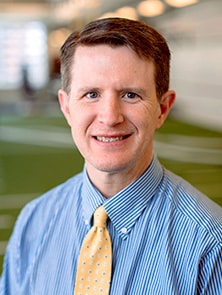 Dr. Calley is the director of the neurologic, oncologic, orthopaedic, and sports physical therapy residencies at Mayo Clinic's campus in Rochester, Minnesota, and is a core faculty member for the Mayo Clinic Physical Therapy Program. He helped organize and create the clinical and didactic curriculum utilized in the Mayo Clinic physical therapy, orthopaedic, and sports residencies, and serves as a primary mentor and core faculty member for these programs.
Dr. Calley is the director of the neurologic, oncologic, orthopaedic, and sports physical therapy residencies at Mayo Clinic's campus in Rochester, Minnesota, and is a core faculty member for the Mayo Clinic Physical Therapy Program. He helped organize and create the clinical and didactic curriculum utilized in the Mayo Clinic physical therapy, orthopaedic, and sports residencies, and serves as a primary mentor and core faculty member for these programs.
He is a 1996 graduate of Mayo Clinic School of Health Sciences' Physical Therapy Program. In 2006, he became a board-certified specialist in orthopaedics, and in 2009 he earned a DScPT degree through the University of Maryland. Dr. Calley is an assistant professor of physical therapy at Mayo Clinic College of Medicine and Science. His research interests include musculoskeletal examination, psychosocial factors, and clinical and residency education.
With a strong background in clinical and residency education, Dr. Calley served 10 years as an outpatient clinical education coordinator and 9 years as the residency coordinator of the Mayo Clinic Physical Therapy Orthopaedic Residency in Rochester, Minnesota. He is a member of the American Physical Therapy Association, the APTA Orthopaedic and Education Academies, and several special interest groups.
Jenny Bradt, P.T., D.P.T.
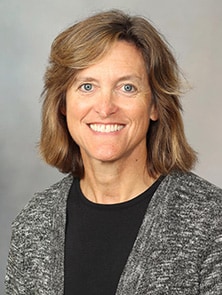 Dr. Bradt has served as the Clinical Lead of the Outpatient Lymphedema and Cancer Rehabilitation Clinic since 2010. She received her Bachelor of Science degree from the University of Notre Dame and her Master of Physical Therapy from Mayo School of Health Sciences in 1993. She completed her transitional doctorate from the College of St. Scholastica in 2016. She received her oncologic clinical specialization as part of the first cohort in 2019. She serves on the Committee of Content Experts for the American Board of Physical Therapy Specialties.
Dr. Bradt has served as the Clinical Lead of the Outpatient Lymphedema and Cancer Rehabilitation Clinic since 2010. She received her Bachelor of Science degree from the University of Notre Dame and her Master of Physical Therapy from Mayo School of Health Sciences in 1993. She completed her transitional doctorate from the College of St. Scholastica in 2016. She received her oncologic clinical specialization as part of the first cohort in 2019. She serves on the Committee of Content Experts for the American Board of Physical Therapy Specialties.
Dr. Bradt is a core didactic faculty member and mentor in the Oncology Residency. In addition, she is an assistant professor in Physical Therapy and teaches in the academic setting for the Mayo Clinic Doctor of Physical Therapy Program. She has co-authored several peer-reviewed articles on oncology and lymphedema topics. Dr. Bradt is a member of the APTA Academy of Oncologic PT.
Mentors
 |
Hannah Christenson, P.T., D.P.T.Board Certified Clinical Specialist in Oncologic Physical Therapy |
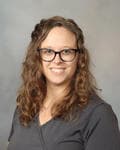 |
Shanna Duellman, P.T., D.P.T.Board Certified Clinical Specialist in Oncologic Physical Therapy |
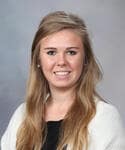 |
Meghan Sontag, P.T., D.P.T.Board Certified Clinical Specialist in Oncologic Physical Therapy |
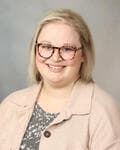 |
Kayla Van Der Weerd, P.T., D.P.T., CLT-LANABoard Certified Clinical Specialist in Oncologic Physical Therapy |
Teaching faculty
- Toure Barksdale, M.D.
- Katie Bauer, O.T., BCPR
- Jenny Bradt, P.T., D.P.T., Board-Certified Oncologic Clinical Specialist in Physical Therapy
- Adam Bridwell, P.T., D.P.T., Board-Certified Cardiovascular and Pulmonary Clinal Specialist in Physical Therapy
- Ryan Buus, P.T., D.P.T., Board-Certified Orthopaedic Clinical Specialist in Physical Therapy
- Darren Calley, P.T., DScPT, Board-Certified Orthopaedic Clinical Specialist in Physical Therapy
- Andrea Cheville, M.D.
- Hannah Christenson, P.T., D.P.T., Board-Certified Oncologic Clinical Specialist in Physical Therapy
- Shanna Duellman, P.T., D.P.T., Board-Certified Oncologic Clinical Specialist in Physical Therapy
- Casey Fazer-Posorske, P.A.-C.
- Rachael Guenzel, APRN, C.N.P., D.N.P.
- Kathleen Hahn, P.T. D.P.T., WCS-ABPTS, Board-Certified Women’s Health Clinical Specialist in Physical Therapy
- Marissa Hamilton, P.T., D.P.T.
- Nathan Hellyer, Ph.D., M.S.
- John Hollman, Ph.D.
- Debra Ness, P.T. DScPT, NCS, Board-Certified Neurologic Clinical Specialist in Physical Therapy
- Lauren Koehler, P.T., D.P.T.
- Aaron Rindflesch, Ph.D., MPT, Board-Certified Neurologic Clinical Specialist in Physical Therapy
- Emily Schmitt, O.T., O.T.D., BCPR
- Meghan Sontag, P.T. D.P.T., Board-Certified Oncologic Clinical Specialist in Physical Therapy
- Leah Struss, Ed.D., M.A., O.T.
- Kayla Van Der Weerd, P.T., D.P.T., CLT-LANA, Board-Certified Oncologic Clinical Specialist in Physical Therapy
Visiting professors and lecturers
A hallmark of higher education excellence is the breadth and depth of information and experience provided to you by faculty and visiting experts. Each year, many prominent professors visit Mayo Clinic to lecture in their areas of medical and scientific expertise.
As a resident at Mayo Clinic School of Health Sciences, you are encouraged to learn from these valuable resources by attending all relevant conferences, lectures, and seminars prepared for students, interns, residents, fellows, and consulting staff.
Facilities
Mayo Clinic's campus in Rochester, Minnesota, includes an extensive outpatient complex, Mayo Clinic Hospital in Rochester, Minnesota, and substantial research and education facilities. This Mayo Clinic site is among the largest, most advanced medical centers in the world.
During the program, residents spend the majority of their time at Mayo Clinic Hospital in Rochester, Minnesota.
/480x0:960x480/prod01/channel_2/media/mccms/content-assets/academics/residencies-and-fellowships/internal-medicine-residency-minnesota/3760365_0029-rochester-campus-1440X480.jpg)
Tour the Mayo Clinic Occupational Therapy Fellowships and Physical Therapy Residencies
7:12
Evaluation
Mayo Clinic School of Health Sciences uses these evaluative tools:
- Written quizzes
- Demonstration of skills
- Self-assessment exercises
- Mentor and faculty feedback forms
- Live patient exams
Mayo Clinic's system of evaluation provides residents and faculty with a comprehensive look at individual performance. This allows faculty and administrative staff to direct residents who are experiencing academic difficulty to the appropriate support resources, including tutoring programs and counseling opportunities.